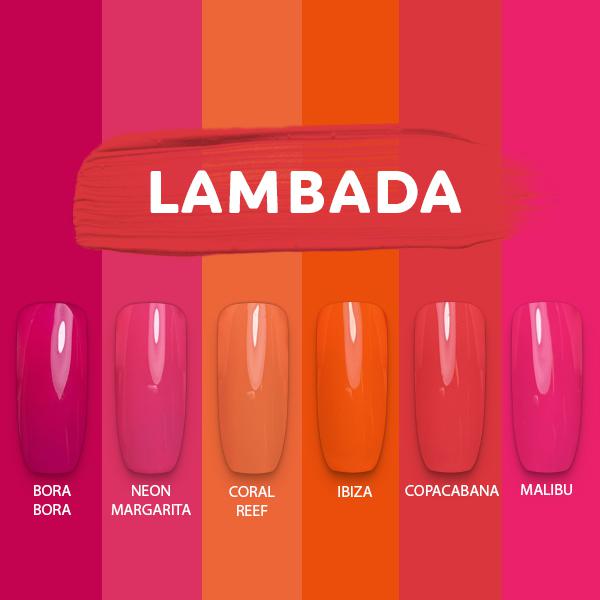Troubleshooting - Neon Gel Colour
SUMMER NAILS LOVE NEON
Seasons affect the choices your clients make and its a fact. Its highly unusual for a client to opt for a Cosmopolitan instead of Plum Pudding in December. So it only figures that we see a surge in sales for summer neon bright shades the second the first peep of sunlight appears.

use the code PINACOLADA for 15% of on selected colours (T&Cs apply)
Click here to shop the colours on offer
Troubleshooting Neons
Some of you may have experienced the unusual behaviour that neons can be notorious for. We will cover a few of these in a bit more detail below.
Our general recommendations are:
-
avoid mixing different gel systems at all times. There are so many gel formula variations on the market and often times products from different systems simply are not compatible on a chemical level. This impacts both aesthetically the finished design as well as its longevity. Most issue we see of systems reacting in a negative manner with one another is with neon shades, light (nude shades) as well as Matte Top Coats.
-
investing in two sets of UV/LED Top Coats to be used separately on dark and light shades to avoid pigment transfer that is difficult to spot before the product is cured.
-
ensuring your lamp is performing correctly to avoid "over curing" the colours.
Light yellow/orange discolouration
In this instance the culprit is most likely the Base Coat. This type of discolouration is normally a sign of a chemical reaction between the base and colour layer and is easily avoidable when the entire gel system is used together i.e.base, colour and top gel under the same brand.
If you are not able to change the base coat you can try removing the inhibition layer from the base coat after curing and before applying the gel colour . Also applying a thin coat of white or nude colour before applying the neon shade can help.
Loss of colour / fading
This issue can occur when the Top Coat used does not shield the colour enough from UV rays, thus causing it to fade. Gellifique® UV/LED Top Coat will protect the colour from fading from the UV rays. Try either the Microcrystal Top Coat or Microcrystal - Armour Top Coat (slightly thinner in texture).

MICROCRYSTAL ARMOUR TOP COAT - £9.89
Dark discolouration
This is a temporary issue which is most common with neon pink colours. The root of the problem is the properties of the fluorescent pigment. Fluorescent pigment during the curing process absorbs UV/LED light thereby becoming darker.
Just like if you iron a bright pink top you will notice that it becomes darker when you glide the hot iron over it and after a while it regains its brightness. The same thing happens with neon pink gel polish colour.
This discolouration can occur anytime between 24-48 hours after curing and typically disappears once the polymerisation process is completed within 24-48 hours. Some UV/LED lamps are known to cause this to happen more than others but either way it is important to remember that this effect is temporary.
To avoid and / or minimise this issue make sure to apply the UV/LED Top Coat in a thin layer and cure as recommended.
Recommendations to your clients
- talk to your clients about the properties of Neon colours to avoid any panic post treatment
*clients should avoid the use of sun beds for at least 48 hours after the nail service - clients should always use gloves for household activities to avoid contact with abrasives
- clients should be aware of the fact that some of the skincare which they may use such as AHA exfoliants for example are also an abrasive